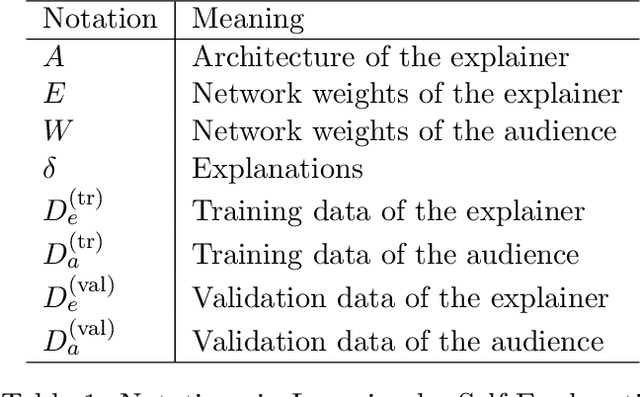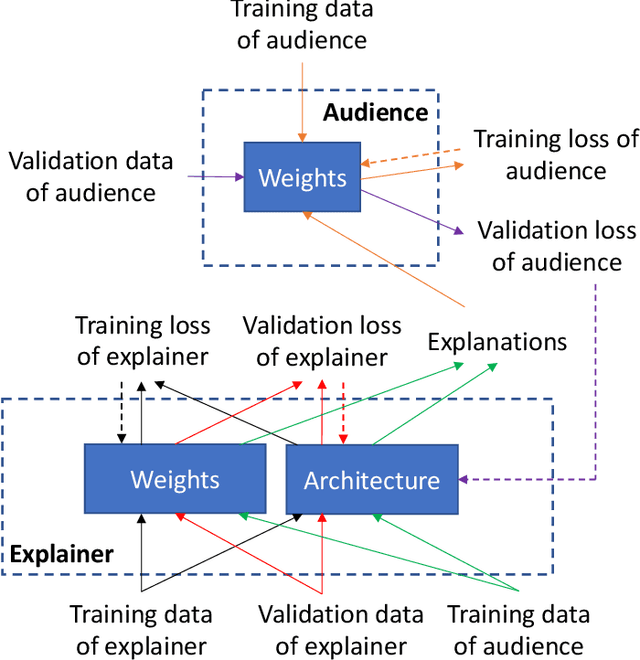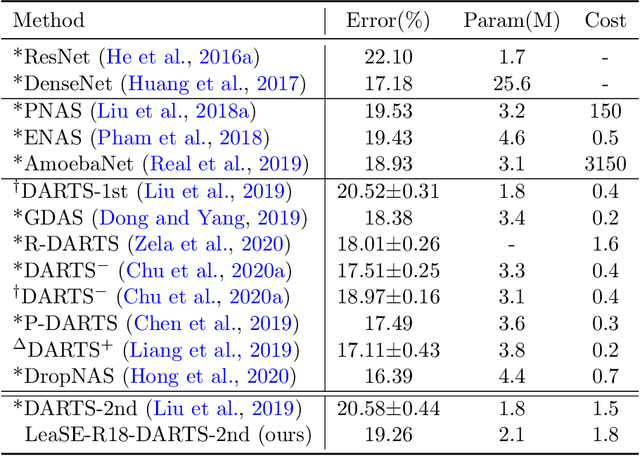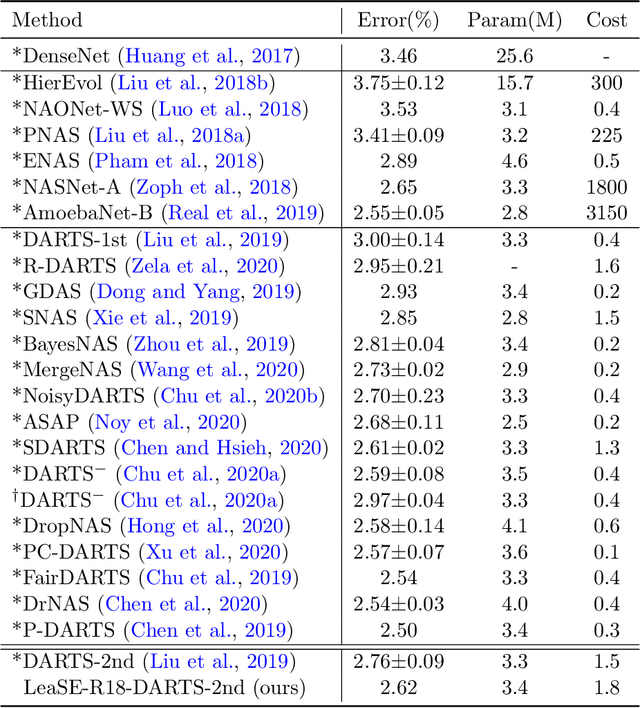Learning by Self-Explanation, with Application to Neural Architecture Search
Paper and Code
Dec 23, 2020



Learning by self-explanation, where students explain a learned topic to themselves for deepening their understanding of this topic, is a broadly used methodology in human learning and shows great effectiveness in improving learning outcome. We are interested in investigating whether this powerful learning technique can be borrowed from humans to improve the learning abilities of machines. We propose a novel learning approach called learning by self-explanation (LeaSE). In our approach, an explainer model improves its learning ability by trying to clearly explain to an audience model regarding how a prediction outcome is made. We propose a multi-level optimization framework to formulate LeaSE which involves four stages of learning: explainer learns; explainer explains; audience learns; explainer and audience validate themselves. We develop an efficient algorithm to solve the LeaSE problem. We apply our approach to neural architecture search on CIFAR-100, CIFAR-10, and ImageNet. The results demonstrate the effectiveness of our method.
 Add to Chrome
Add to Chrome Add to Firefox
Add to Firefox Add to Edge
Add to Edge